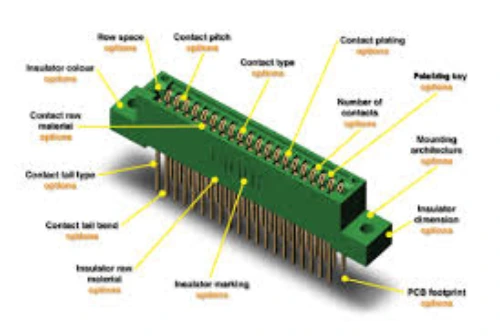To expand your news reach, consider advertising with our media partner, Patch Media, at https://heypapipromotionsmedia.town.news/. Patch is a nationwide news network comprising over 1,000 hyperlocal websites dedicated to community news across the United States. For press release distribution services, please call or visit https://heypapipromotions.com/advertise.
Similar to mini Peripheral Component Interconnect Express (mPCIe) connectors, M.2 connectors support various signal interfaces and storage protocols, optimizing the use of the PCIe bus. M.2 connectors are available for PCIe 3.0, PCIe 4.0, PCIe 5.0, Serial ATA (SATA 3.0), and SuperSpeed USB.
M.2 connectors provide the bandwidth necessary for AI/ML accelerators and solid state drives (SSDs). They are identified by their dimensions and keying. For instance, a 2260 M.2 module is 22 mm wide and 60 mm long. Additionally, M.2 modules feature recesses on the plug connector strip to prevent incorrect insertions. Common key formats include B, M, A, and E, along with combinations like B+M and A+E.
Benefits of M.2 for AI/ML
Supports High Density Solutions: The smallest M.2 devices are 18% smaller than the smallest mPCIe devices, enabling more compact designs.
Flexibility: M.2 ports are versatile and can accommodate multiple sizes of M.2 cards.
Low Power Consumption: M.2 devices are limited to 7W or less, making them energy efficient.
High Speed: M.2 slots can support two to four PCIe lanes, with PCIe 4.0 providing a transfer rate of 16 Gb/s per lane.
Advanced PCIe M.2 Gen 5 Connectors: These connectors have 67 contacts on a 0.50 mm pitch, support single- and double-sided modules, and require less board space compared to mPCIe connectors. Additional features include:
Various connector heights and keying options
Support for angled insertion of modules
Availability in right angle or vertical orientations
EDSFF for Storage
The EDSFF (Enterprise and Data Center SSD Form Factor) specification was developed by the Storage Networking Industry Association's SSD Small Form Factor (SNIA SFF) Technology Affiliate group to meet data center storage needs. It was created to overcome the limitations of legacy form factors by providing an optimized specification for NAND flash memory and other devices. The benefits of the EDSFF connector specification include:
Enhanced Signal Integrity: Supports PCIe 5.0 and PCIe 6.0.
Unified Connector Standard: A single connector standard that supports all EDSFF configurations.
Versatility: Flexible enough to support chassis and backplane applications.
Higher Power Capacity: Supports power levels up to 70W.
OCP NIC 3.0 for More Power
The OCP NIC 3.0 specification offers three form factors: Small Form Factor (SFF), Tall Small Form Factor (TSFF), and Large Form Factor (LFF).
SFF and TSFF: These configurations can support up to 16 PCIe lanes and handle up to 80W of power to the NIC.
LFF: This configuration can support up to 32 PCIe lanes and handle up to 150W of power with a dual connector setup.
OCP NIC 3.0 is compatible with PCIe Gen 4 (16 Gb/s) on both the baseboard and the OCP NIC 3.0 card, and it is electrically compatible with PCIe Gen 5 (32 Gb/s). Each OCP NIC 3.0 card can handle up to 32 PCIe lanes and supports single-host, multi-root complex, and multi-host environments. Future iterations are expected to support differential pairs up to 64 G PAM4, with plans to upgrade to 112 G PAM4 and 224 G PAM4 further down the line.
Card Edge Connector Features
Contact Points: The connector has a series of contact points that align with the conductive traces on the edge of the PCB.
Slots and Guides: The connector often has slots and guides to ensure proper alignment and insertion of the PCB.
Variety of Sizes: They come in various sizes and pin configurations to suit different applications.
Durability: Designed to withstand repeated insertions and removals without degrading the contact quality.
Card Edge Connector Applications
Computers: Commonly used in computer expansion slots, such as PCI, PCI Express, and AGP slots.
Consumer Electronics: Found in devices like game consoles and certain types of audio/video equipment.
Industrial Equipment: Used in various industrial machines and control systems.
Telecommunications: Employed in communication devices and systems for connecting various components.
Card Edge Connector Advantages
Simplicity: Easy to insert and remove, making them ideal for user-replaceable components.
Cost Effective: Generally cheaper to produce and implement than other types of connectors.
Versatility: Available in many configurations to meet different design requirements.
Card Edge Connector Disadvantages
Wear and Tear: Repeated use can lead to wear and loss of contact quality.
Environmental Sensitivity: Can be susceptible to dust and debris, which might affect performance.
Card Edge Connector Types
A card edge connector is a type of electrical connector used to connect a printed circuit board (PCB) to an external device. It is called "card edge" because it connects via the edge of the PCB, where conductive traces are exposed and act as contacts for the connector.
This type of board edge connector is engineered for high Signal Integrity (SI) on printed circuit boards (PCBs). Our card edge connectors, designed to maximize PCB real estate, offer performance reliability and design flexibility for the latest PCIe protocol solutions. The product portfolio includes right angle, surface mount sockets with 52 contacts for express mini cards and 76 contacts for display mini cards. Select models feature latches for different heights. Some products in this category can support multiple function add in cards and modules, including WiFi, Bluetooth, global navigation satellite systems, near field communication, and Wireless Gigabit Alliance (WiGig).
GUOYUAN ELECTRONICS can offer a wide range of pcb edge connector with different specifications and features. You can visit our website or contact us directly to inquire about card edge connector pcb offerings, specifications, pricing, and any other details you may need to make an informed decision.
References
EDSFF – A New SSD Form Factor for Next Gen Servers and Storage, Kioxia
How Artificial Intelligence (AI) Is Transforming NVMe SSDs, Microchip
PCIe M.2 Gen 5 Card Edge Connectors, Amphenol
The M.2 interface, Delock
Unlocking the Power of Cloud Storage and Compute with EDSFF SSDs, Solidigm
What Is The M.2 Expansion Slot?, Premio

Comments